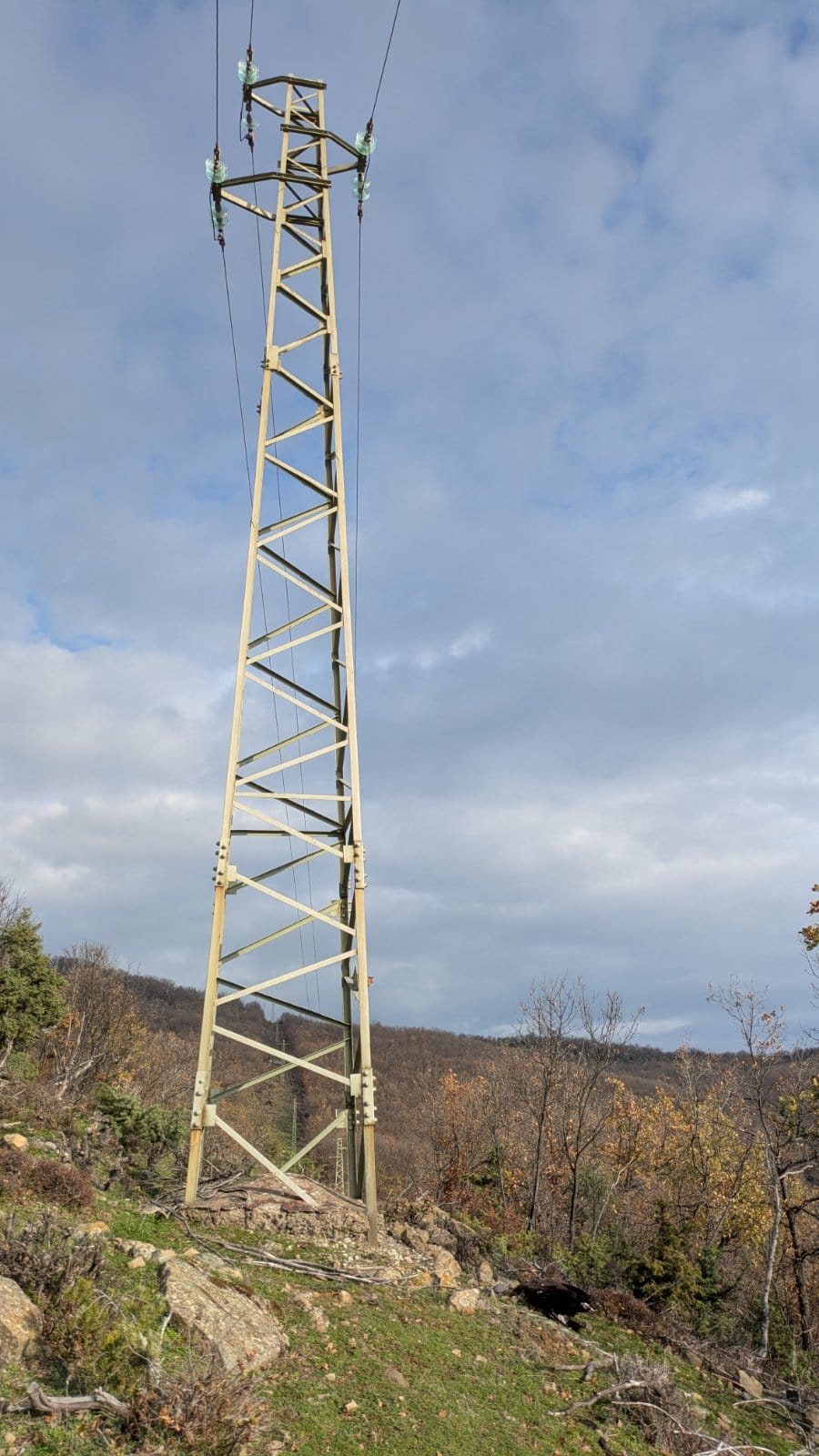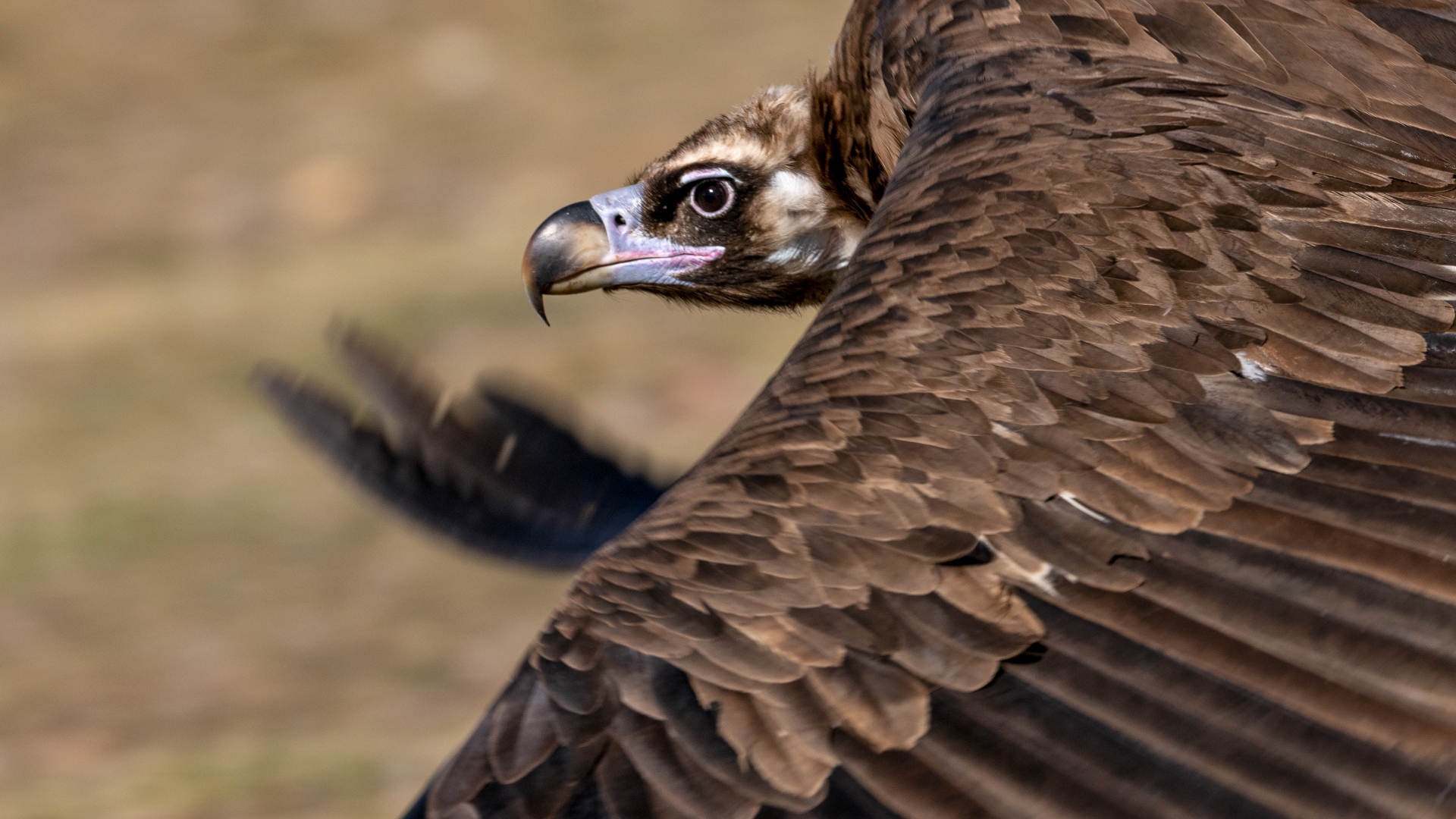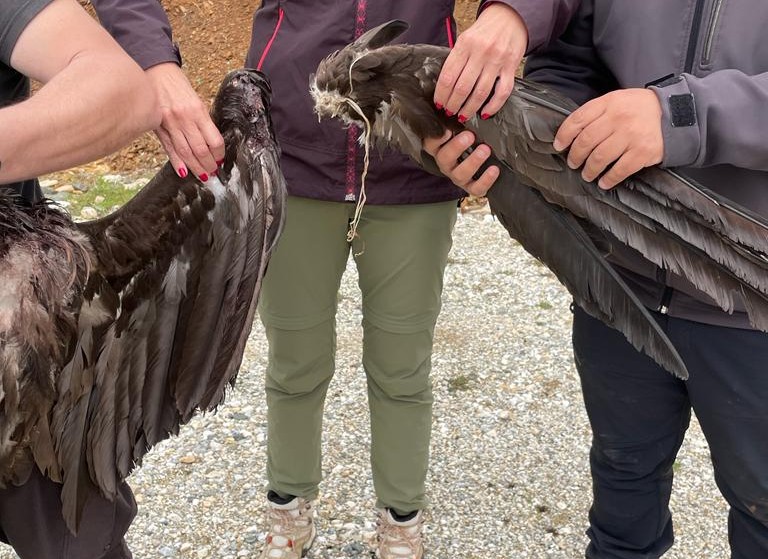Tewes, a female Cinereous Vulture, delights scientists and nature enthusiasts travelling far and wide in Europe again this year. Even though it is common for young Cinereous Vulture to roam, it seems that Tewes enjoys exploring more than other vultures. Her journey highlights the importance of natural corridors and allows scientists to deeper study the behaviour of the species.

Born to explore
Tewes is a female Cinereous Vulture (Aegypius monachus), hatched in 2020 in Spain. After being rescued and rehabilitated, she was donated to Bulgaria by the Regional Government of Extremadura, in collaboration with AMUS and Vulture Conservation Foundation.
In June 2022, she was released in In Vrachanski Balkan Nature Park, Bulgaria, by the Bright Future for Black Vulture (LIFE14 NAT/BG/649) project team. She was named after our colleague and Cinereous Vultures expert Evelyn Tewes.
In the spring of 2023, Tewes begun her wanderings touring Romania. Then she visited Griffon Vultures colonies in Serbia and Croatia and spent the summer in the Alps. She flew over Italy, Switzerland and stopped in Hohe Tauern National Park in Austria. In November, she moved south. First, she reached the Akarnanica Mountains in Greece, close to a Griffon Vultures colony. Then, by the end of the year, she reached the southernmost tip of the Peloponnese.
Last year she started over again, heading north through Albania, Serbia, Bosnia and Herzegovina and Hungary. The last time we shared her adventures she was photographed at the vulture feeding site in Lago di Cornino Regional Natural Reserve in Italy.
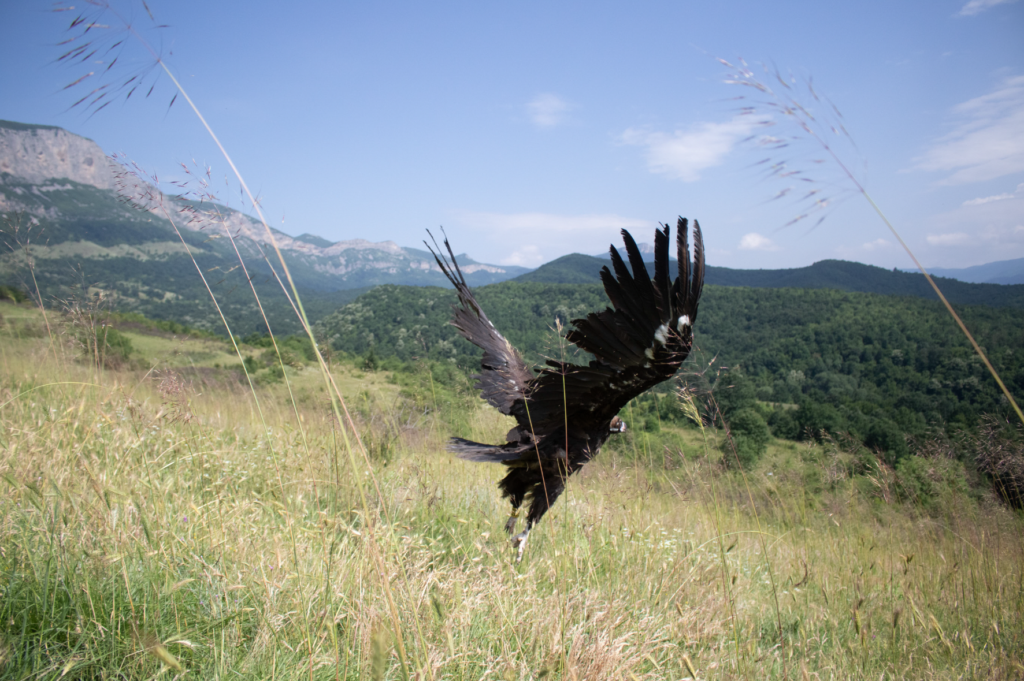

Let’s pick up where we left off
After visiting Italy, Tewes spent some time in Krk and Cres (Croatia) with the local colony of Griffon Vultures. In May, she moved to Slovakia and then moved back to the Hohe Tauern National Park in Austria for summer.
In September her GPS transmitter battery run out while she was heading west and flying over Liechtenstein. At this moment, the contribute of nature enthusiasts became crucial. Indeed, Tewes was identified in a picture taken in France, confirming she was well and still exploring Europe.
At the beginning of March 2025, the transmitter battery switched back, locating the young Cinereous Vulture in southern Italy. The latest data comes from Parco Nazionale del Gargano (Puglia, Italy) a location she had not yet visited in her gran tour of Europe.
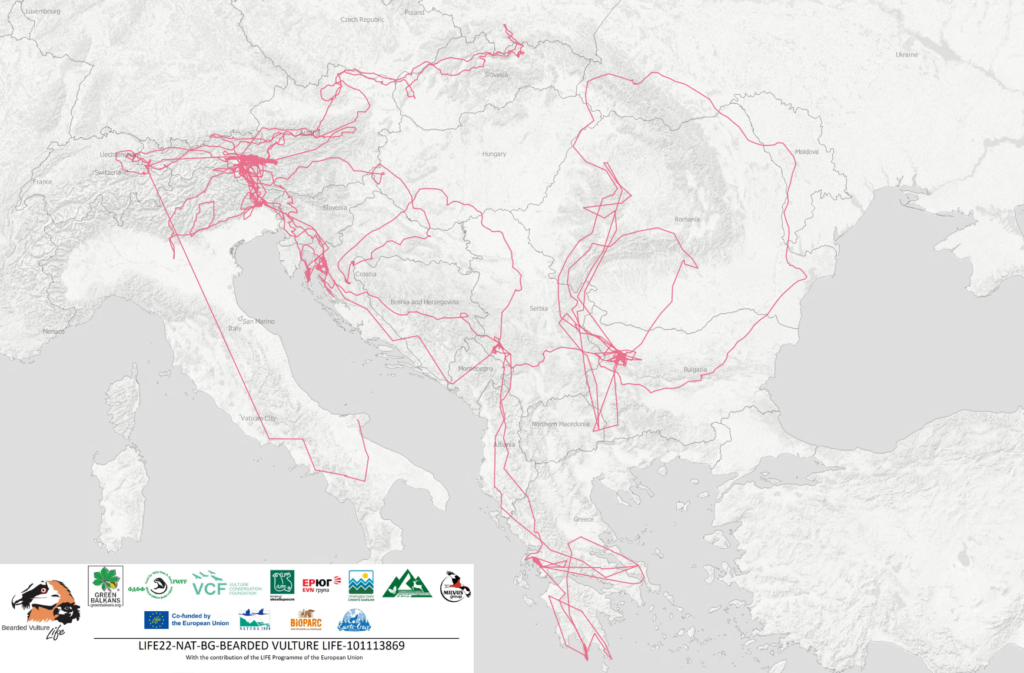
What are we learning from Tewes’ adventures
With her incredible journey around Europe, Tewes first and foremost reminds us that natures know no border. Therefore, conservation efforts must be developed with an international dimension. The reintroduction programme that brought her from Spain to Bulgaria is now following her across Europe, where other conservation programmes are in place to protect Cinereous Vultures.
Following Tewes adventures has been possible thanks to the GPS transmitter she has been equipped with by the Bulgarian team. Nowadays, technology has a crucial role in conservation. It allows us to better understand each species behaviour, and to follow specific individuals in their journey. The data retrieved through GPS transmitter are also crucial for tracking potential threat to vultures’ safety and to study their flight routes and habits. Lastly, they allow the team to understand if a vulture is sick or in danger and quickly intervene to save it.
Lastly, Tewes reminds us of the importance of preserving natural habitats across countries. She might not have found her forever home yet, but her roaming touched several conservation hotspots in Europe.
Celebrating Tewes’ journey means celebrating the collective efforts across Europe to help Cinereous Vultures thrive and reclaim their historical range. Each site she visited represents a milestone in nature and vultures conservation, a testament to the dedication of those working to protect them, and a reminder of the ongoing need to protect our ecosystems.
